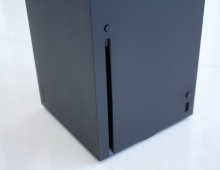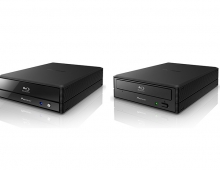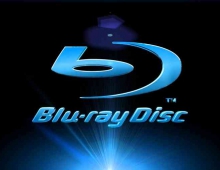
Blu-Ray to Take off After 2009: Report
The Blu-ray will be the development trend in spite of HD DVD being presently supported by most manufacturers, a recent research indicates.
Research and Markets released the results of its "Global Optical Storage Industry Report, 2006-2007," which includes the details about the global shipments of optical disc drives (ODDs), the companies related to the optical storage industry, along with some estimations regarding the next-generation high definition disc formats.
"With regard to Blu-ray and HD DVD, It is widely acknowledged that Blue-ray will be the development trend in spite of HD DVD being presently supported by most manufacturers. On account of low price, HD DVD also sells very well in America. Yet, some manufacturers hold HD DVD as the transitional product, and they invest a lot into the R&D of Blu-ray driver. Since the instability occurred to Sonys Blu-ray driver PS3, the shipment has been delayed for several times, which led to the wait-and-see attitudes from most manufacturers. Besides, the high cost of Blu-ray also hampers the development of Blu-ray," reads the report. "The majority of manufacturers believe that there wont generate a strong market growth for Blu-ray until 2009. And HD DVD will still be the mainstream in the market during 2007-2009," the report concludes.
Red laser drives
Globally, the four Optical Driver giants are HLDS (HITACHI-LG Data Storage), TSST (Toshiba Samsung Storage Technology), Sony NEC and LiteOn. LiteOn might top the world after obtaining the orders of PBDS in 2007. Besides, other companies have to struggle for survival under the big pressure from those large counterparts, but Panasonic is an exception. Panasonic enjoys patents on in-dash optical driver, which was widely applied in car audio system and high-end laptops. Panasonic has shared over 90% of in-dash optical driver market.
Even with an annual shipment of 10 million units, ASUS still lags far behind the worlds top three manufacturers, particularly after BenQs Optical Driver department incorporated into LiteOn. It is quite difficult for ASUS to compete with those large companies under the scale-economy effects. Moreover, as the patent authorization is unable to be supported by those big international manufacturers, this makes ASUS impossible to compete with those counterparts in cost.
Others, like TEAC, have been in loss for years and will be inevitably purchase by large counterparts or go bankrupt. The Optical Driver business of Foxconn mainly focuses on OEM services of Sony PS3. Foxconn is making great efforts in the development of Blu-ray DVD driver, leaving the cost unconsidered.
"With regard to Blu-ray and HD DVD, It is widely acknowledged that Blue-ray will be the development trend in spite of HD DVD being presently supported by most manufacturers. On account of low price, HD DVD also sells very well in America. Yet, some manufacturers hold HD DVD as the transitional product, and they invest a lot into the R&D of Blu-ray driver. Since the instability occurred to Sonys Blu-ray driver PS3, the shipment has been delayed for several times, which led to the wait-and-see attitudes from most manufacturers. Besides, the high cost of Blu-ray also hampers the development of Blu-ray," reads the report. "The majority of manufacturers believe that there wont generate a strong market growth for Blu-ray until 2009. And HD DVD will still be the mainstream in the market during 2007-2009," the report concludes.
Red laser drives
Globally, the four Optical Driver giants are HLDS (HITACHI-LG Data Storage), TSST (Toshiba Samsung Storage Technology), Sony NEC and LiteOn. LiteOn might top the world after obtaining the orders of PBDS in 2007. Besides, other companies have to struggle for survival under the big pressure from those large counterparts, but Panasonic is an exception. Panasonic enjoys patents on in-dash optical driver, which was widely applied in car audio system and high-end laptops. Panasonic has shared over 90% of in-dash optical driver market.
Even with an annual shipment of 10 million units, ASUS still lags far behind the worlds top three manufacturers, particularly after BenQs Optical Driver department incorporated into LiteOn. It is quite difficult for ASUS to compete with those large companies under the scale-economy effects. Moreover, as the patent authorization is unable to be supported by those big international manufacturers, this makes ASUS impossible to compete with those counterparts in cost.
Others, like TEAC, have been in loss for years and will be inevitably purchase by large counterparts or go bankrupt. The Optical Driver business of Foxconn mainly focuses on OEM services of Sony PS3. Foxconn is making great efforts in the development of Blu-ray DVD driver, leaving the cost unconsidered.





















